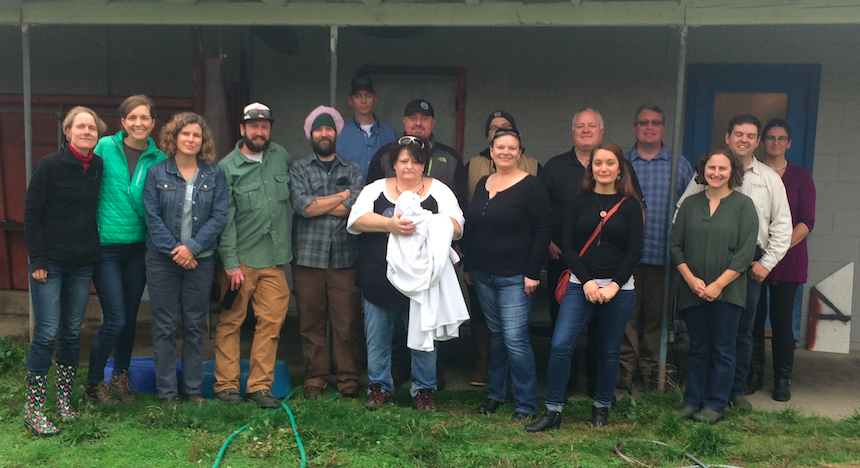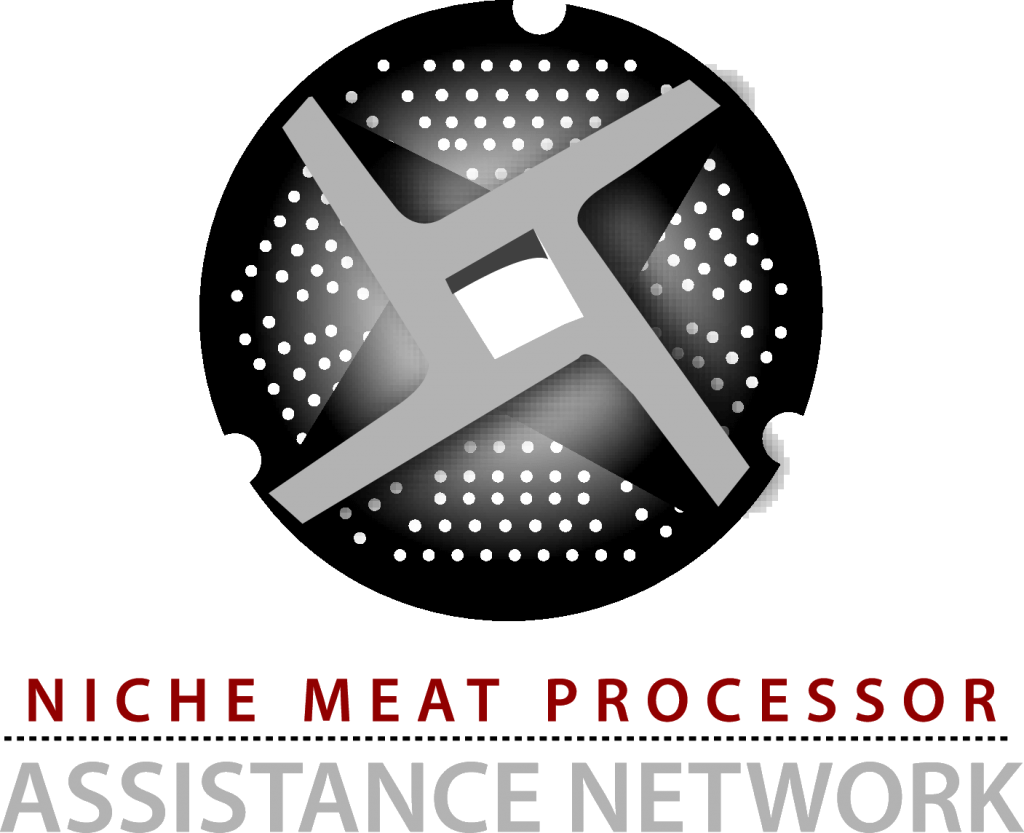Read NMPAN’s latest 2023 Annual Report marking 14 years of service to the niche meat industry!
To mark a decade of operations from 2008-2018, NMPAN conducted a ten-year review in early 2018 to assess its effectiveness to date and adapt for the future. The review included:
- An online survey of listserv members (135 participants; 11 percent of total listserv)
- An online survey of the Advisory Board
- In-depth interviews with 15 niche meat supply chain stakeholders.
A total of 161 people participated in the assessment, including processors, producers, brand/ distributors, consultants, extension agents, NGOs, chefs, and equipment/supply companies. Some respondents wear multiple hats, as producer/processors, for example. Respondents were geographically diverse, coming from every region of the U.S. and at least three other countries.
Read the Executive Summary (6 pages)
Read the Full Report (34 pages)
To support our work for the next decade, please consider becoming a business sponsor. Read more about sponsorship levels here.
“NMPAN remains a gold standard.” – Nonprofit partner
The primary takeaway from this assessment is that NMPAN is a successful and useful community. NMPAN members and stakeholders feel satisfied and empowered by their participation. They are not looking for major changes in operations or focus areas. Key findings include:
- NMPAN has achieved its original goals of building a national community of practice and a respected, robust resource hub. Relationships and easy access to knowledge are the most valued outcomes of the network, and the 1,200-member listserv, website, and webinars are its most used tools.
- NMPAN’s biggest challenge is that demand for its services exceeds current capacity. Many members would like to see NMPAN to do more things for more people.
- Changes in the meat industry as a whole, and the evolution of the niche meat sector in particular, will continue to present challenges to NMPAN members. Respondents perceive that the niche meat sector is gradually becoming more consolidated, bifurcated, and specialized, which creates difficulties including: an increasingly complex regulatory environment, which can present barriers to beginning or expanding a business; labor – not just skilled, but any – is increasingly hard to come by; concerns about small business profitability and longterm viability. Enhanced communication and collaboration with other organizations is essential to understand and address these challenges more comprehensively while determining the best role that NMPAN can and should play.
Accomplishments
NMPAN is “invaluable” in creating community and connecting people in what can otherwise be a small and isolated field. The network is tremendously successful at facilitating relationships, collaboration, and information exchange between people who otherwise might not meet, including giving new and aspiring processors access to experienced processors. NMPAN provides access to a wealth of knowledge and information, whether in resources collected on the website, in webinars, or through the collective wisdom of the listserv community. Processors and non-processors alike said that if they have a question, NMPAN likely has the answer. When asked how well NMPAN is “meeting its mission,” stakeholder respondents gave an average of 4.4 of 5. Those who provided a score of less than 5 did so because they appreciate the network’s existing work and would like it to do more. 87 percent of listserv survey respondents (115 out of 135) consider the network achieving its mission “moderately well” to “very well.”
As noted above, one of NMPAN’s core principles is that increased coordination and communication between livestock producers and processors – and also between processors and meat buyers further along the supply chain – are essential to processor viability. This requires mutual understanding of each other’s roles, capacities, and constraints. Respondents were asked if, over the last decade, non-processors have an improved understanding of the role of processors and processing in the supply chain. While there was no clear consensus (see full report for specific responses), NMPAN does appear to have helped make processing “less of a black box.” For example, as one meat company explained, “The better we can understand the challenges the processor is facing, the more smoothly we can work with them…and make fewer unreasonable demands.”
Areas for Improvement
- NMPAN is not reaching all the people it could be and should do wider outreach. Illustrating a point made by many survey respondents, in a room of approximately 60 meat processors at a recent regional conference, only four were members of the NMPAN listserv. Custom and retail butchers, in particular, are not well represented in the network.
- NMPAN has some important questions to consider about its listserv. The listserv and its community were consistently cited as the most valuable element of NMPAN, but there are also concerns. Some processors, in particular, would like to have a more dedicated space to talk exclusively to other processors. The network has always included start-up processors, farmers and ranchers, NGO representatives, and others who may seem to experienced processors to be asking tangential questions and not have expertise to contribute to other people’s inquiries. On the other hand, other respondents would like to see more links in the supply chain (e.g., renderers, plant designers/engineers, equipment suppliers, brands and distributors) represented on the listserv and in other resources. The question for NMPAN is how to balance the need to facilitate expertise in conversations while also continuing to include a 360-degree view of the niche meat supply chain. “We have met a lot of great operators and marketers through being associated with NMPAN.” – mid-scale processor
- The State Affiliate program is not well utilized. Many contacts are out of date, website links are broken, or the people identified are not well versed in the niche meat space. The program should be reinvigorated or dropped.
What’s Next?
Respondents want NMPAN to keep doing what it has been doing and do more. “More” includes:
- Broader outreach to a wider audience and more partnerships with both similar groups and with additional links in the supply chain. For example, a regional meat company that aggregates from multiple producers wants to see an NMPAN for their type of business. “We as regional players will increasingly depend on platforms like NMPAN where these conversations have already started, to connect in other ways to create efficiency …and have exposure to the great ideas.”
- More content on regulations, labor, and business viability/profitability. NMPAN already has considerable resources on these topics, but some material should be updated or made more accessible, including presenting more of it via video. The requests for this information could also indicate that is not obvious on the website, which is not as user friendly as it could be, and that NMPAN could do additional regular outreach within the network to remind members what resources are available. The feedback from the assessment stimulates critical thinking about what both NMPAN and others are and could be doing more effectively. The actors and organizations in the niche meat space have changed since NMPAN began 10 years ago, and NMPAN could strengthen communication and collaboration with them. Potential enhanced and new partnerships could include American Association of Meat Processors, state and regional meat processor associations, college meat cutting programs, state meat and poultry inspection programs, and state departments of agriculture. NMPAN has connections with most of these already – for example, NMPAN joined AAMP shortly after its 2008 launch – but they could be expanded.
“The more open you can be about what you do and show people what you do, you’ll grow – and the whole industry will grow.” – Processor
In addition, the meat industry as a whole has evolved in the last ten years. On the one hand, demand and supply of niche meat and poultry have continued to grow, and value chain capacity – not just processing, but distribution and marketing as well – has grown, albeit unevenly. This is a positive development but comes with challenges, including concerns about market and consolidation pressures from the conventional meat industry; increased regulatory pressure that can disproportionately burden smaller processors; and the durable challenges of labor: both finding skilled labor and coping with the aging-out of processors without succession plans, much as is happening across the agricultural sector.
Conclusion
“The website has been a great resource for case studies and actual ideas and mapping plans.” – small-scale processor
NMPAN is a national information hub and peer learning community for people, businesses, and organizations around the country working on challenges and opportunities related to the critical role of processors in the local, regional, sustainably-raised meat and poultry sector. The primary takeaway from this assessment is of a successful, useful network. Its members and stakeholders feel satisfied and empowered by their participation and are not looking for major changes in NMPAN operations or focus areas. In its next ten years, NMPAN can increase its value and impact by expanding its reach, building on existing partnerships and creating new ones, and developing additional programming on the durable challenges facing this industry
“NMPAN has been critical to the National Sustainable Agriculture Coalition’s work on livestock, meat processing, and food safety issues.” – NSAC Senior Strategic Advisor
Read the Executive Summary (6 pages)
Read the Full Report (34 pages)
What are NMPAN’s plans for the next 5 years? Read our Strategic Plan summary here.
To support our work for the next decade, please consider becoming a business sponsor. Read more about sponsorship levels here.



